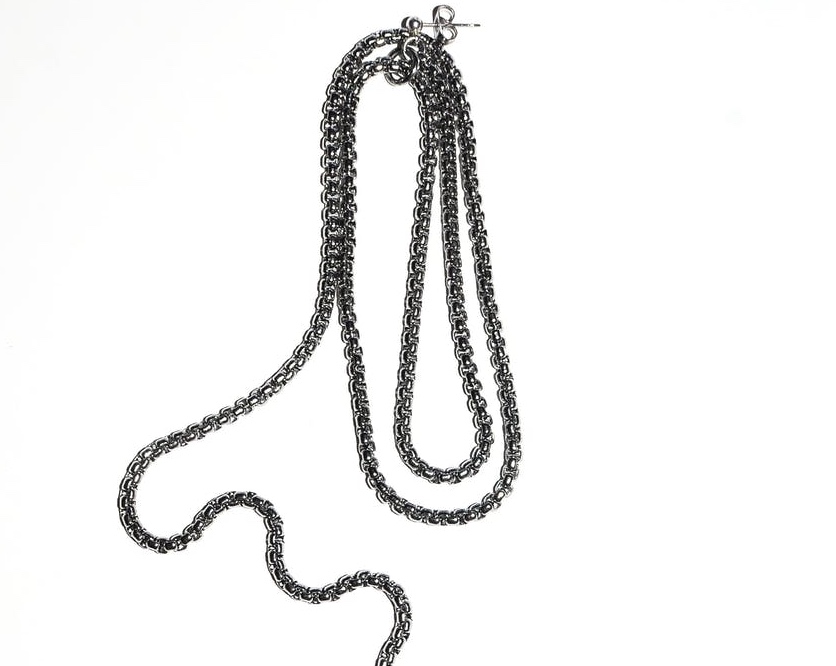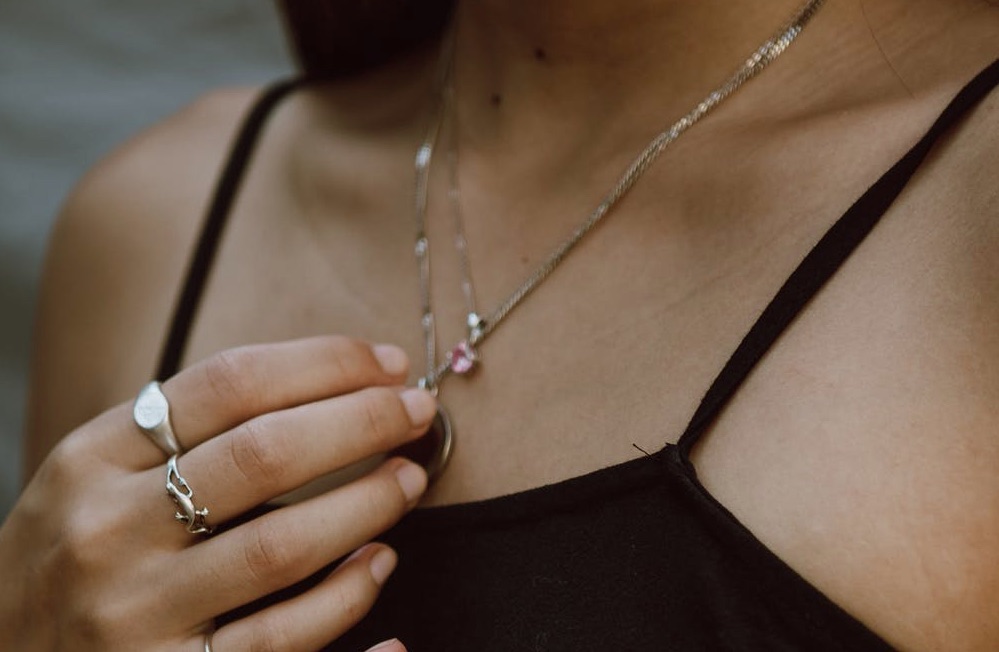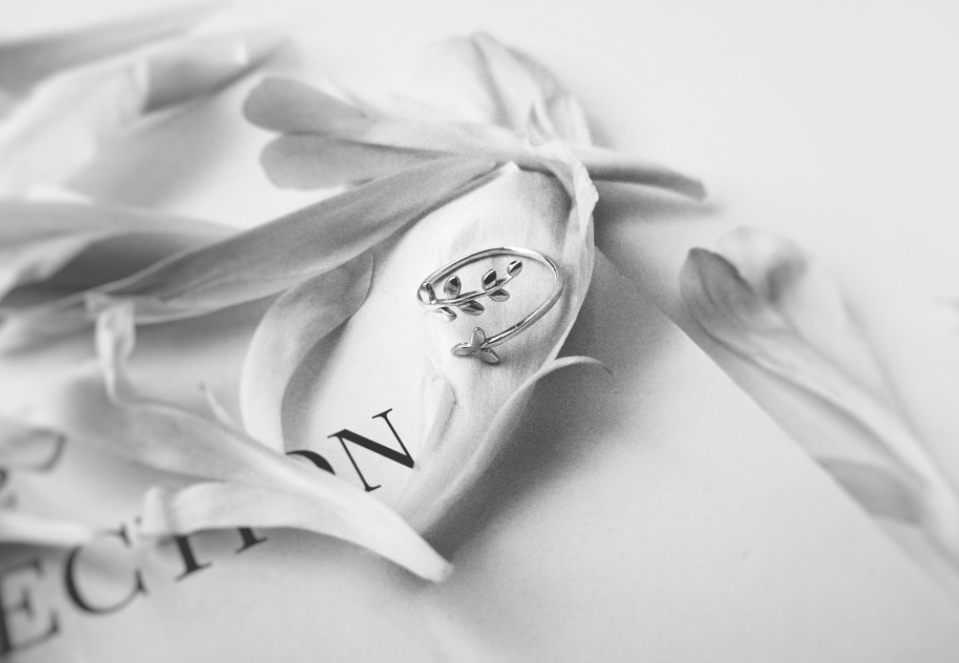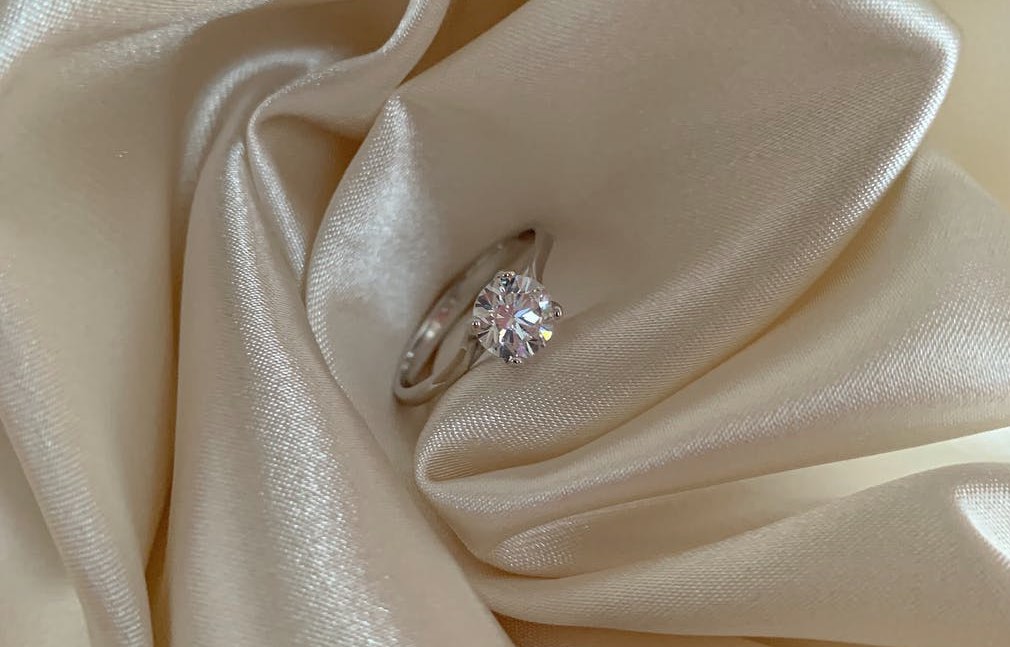It's easy to get confused when hearing terminology like "sterling silver," "silver plate," "pure silver," "fine silver," "925 silver," "coin silver," "nickel silver," and so on; the market is flooded with silver in a wide range of qualities.
Silver has the classic metallic sheen that makes it instantly recognisable. It's always in style and is always utilised in jewellery. It's an attractive and sturdy metal with great tensile strength. Silver is in high demand among both designers and consumers.
Since its discovery in 3000 BC in what is now Greece and Turkey (previously Anatolia), silver has been highly prized and is unlikely to ever go out of vogue. Pure silver is expensive yet can't be used for jewellery because of its softness. When silver is combined with a small amount of alloy, the resulting material is known as sterling silver. There are numerous types of silver, including sterling silver, silver plate, fine silver, pure silver, nickel silver, and 925 silver.
How about 925 sterling silver, though?
Knowing the distinction between pure silver and 925 sterling silver is important if you plan to buy silver jewellery. However, silver does not consist entirely of silver. Aside from the 99.9 percent silver content, it also contains trace amounts of other metals including Copper.
The difference between sterling silver and 925 silver is often questioned. The quick response is "none" since that's the truth. The silver alloy known as "sterling silver" also goes by the moniker "925 silver."
Sterling Silver is Not The Same as Pure Silver or 925 Silver.

Simply said, What is The Definition of "Pure Silver"?
It's not uncommon to hear "fine silver" used to refer to pure silver. It has a real silver content of 99.9% and contains only 1% of other metals as trace components. The white metal looks stunning in this setting. There is only slight tarnish on it. Nonetheless, it is typically overly soft and pliable.
A Definition of Sterling Silver.
Alloying silver with additional metals produces the alloy known as sterling silver. It's composition is 92.5 percent silver and 7.5 percent alloy. Nickel, copper, and zinc are all viable additions to the alloys.
To make an alloy that is more durable and less prone to wear and tear than pure silver, copper is often added to the silver. This alloy is known as sterling silver.
Purity standards for sterling silver set the threshold at 92.5%, therefore 7.5% of the alloy can be copper or another metal (usually nickel or zinc).
Coin silver, an alloy of lower purity, is another option. Typically, its silver content is 90% or less.
Some countries, including the United States of America and Europe, have a rigors sterling silver standard of 92.5 silver to 7.5 other alloys, while other countries, such France, have a standard of 95 silver to 5 other alloys. However, 92.5 is the universally accepted norm.
Silver's utility is enhanced by combining it with other metals (usually copper). Silver makes up 92.5% of sterling silver, with the remaining 7.5% coming from copper and other alloys. Non-sterling metals are those that contain less than 92.5% silver.
Most silver jewellery is made of sterling silver, despite popular belief to the contrary.
So, Exactly What Is 925 Silver?
Simply put, 925 silver is pure sterling silver. They share a common alloy formula in their construction. That's the extent of the distinction; they're all called something else.
It's possible that you're unfamiliar with the term "sterling silver." The composition of sterling silver is 92.5% silver and 7.5% alloy. A metal alloy is a compound made up of two or more elements from the periodic table. Alloys can include zinc, copper, or nickel in sterling silver. A stringent standard of sterling silver at 92.5 silver to 7.5 copper or other alloys is enforced in the United States, Europe, and most of the world, but there are alternative standards as well. It's worth noting that the bar is set at 95% in some nations like France. On the other hand, 92.5 is the most typical. Nonetheless, 925 sterling silver is superb in most every way.
This begs the question, then: just what is "925 silver"? Simply said, it's just as valuable as sterling silver. The only real distinction between sterling silver and 925 silver is in the nomenclature; both are composed of the same silver alloy blend.
The distinction between pure silver and 925 sterling silver is important to know if you are new to the jewellery industry and are thinking about purchasing 925 Sterling Silver. Jewelry and other ornamental goods frequently made from sterling silver.
However, silver does not consist entirely of silver. Aside from the 99.9 percent silver content, it also contains trace amounts of other metals including Copper. The silver content of Sterling Silver, on the other hand, is 92.5%, with the remaining 7.5% being composed of copper. Because of this, 925 Silver is the universally accepted standard for describing Sterling Silver.
Because it is so soft and flexible, pure silver is rarely used alone in design. Adding other metals like Copper can give the material a bit more hardness. Since it is so durable, jewellers can use 925 Sterling Silver to create even the most complicated and detailed designs.
Does Sterling Silver Contain Actual Silver?
In the same way that 18k gold is real gold even though it isn't pure gold, so too is Sterling Silver real silver. For the same reasons that silver jewellery is made with metal alloys to increase its toughness, so is gold jewellery. Zinc, platinum, and germanium are only few of the metal alloys that are employed in both compounds.
So, what other metals are added to silver to make it more long lasting? The most widespread addition is copper. Zinc, manganese, platinum, and germanium are occasionally, but infrequently, added to the alloy. Since many people are allergic to Nickel, it is no longer a typical addition to Sterling Silver.
What's the Point of Trying to Tell Them Apart?

The price of 925 Sterling Silver jewellery is astronomical. The opposite is true, though, and you should expect to spend a significant sum on sterling silver jewellery, such as necklaces and rings. However, due to its rising value over time, purchasing it is a wise decision. Be wary of "unknown suppliers" selling jewellery that looks like 925 sterling silver but is actually a knockoff.
Many jewellery stores sell counterfeit sterling silver necklaces, rings, earrings, etc., therefore this is a major problem in the industry. In comparison to more expensive metals like gold, sterling silver is quite affordable. Despite this, sterling silver jewellery is widely imitated and marketed as a commodity.
Examples include silver plated jewellery labelled as sterling silver while in fact it is just silver plating. These jewellery pieces may look nice now, but their low silver content means they will break down quickly.
Fine silver jewellery is defined as having 92.5% silver or greater, yet unalloyed silver is too brittle to be used in most applications. Therefore, copper and nickel are frequently used to make up the remaining 7.5%.
Silverplate, on the other hand, is not the same as sterling silver because only the outside layer of the jewellery is silver and the rest is a copper or nickel alloy.
Learn the Secrets to Recognizing Real Sterling Silver
Examining the item for a stamp or mark known as a "hallmark" is the simplest way to determine whether or not it is made of sterling silver. Certified sterling silver, for instance, will have the words "sterling" or "925" stamped or otherwise marked on the item.
The letters "STG," "S.S.," or "STER," found on sterling silver hallmarks, are all genuine.
Keep in mind that 925 silver, often known as sterling silver, is the same thing. Now you know that jewellery marked "sterling" or "925" is genuine sterling silver, you may shop with confidence.
How to Verify the Authenticity of Sterling Silver (92.5)
The Hallmark Procedure
Make sure you look for a stamp or hallmark on the back of your silver jewellery (you might need a magnifying lens for this). For instance, if the number "925" is stamped into a piece of jewellery, that means that it is made up of 92.5% pure silver. The words "Sterling Silver," "Ster," or "Sterling" may also be stamped on the item. Common engraving areas on jewellery tend to be the piece's bigger surfaces.
The Magnet Theory Exam
Keep a standard magnet on top of, or next to, the jewellery you want to protect. If your item of jewellery attracts a magnet, it is not made of 92.5 percent sterling silver or more. Depending on who created your piece of jewellery, the alloy it was cast in can have a slightly varying percentage of this or that element.
"Weight" as a Metric for Quality
It is also simple to determine whether or not a piece of jewellery is made of genuine 92.5 Sterling Silver by weighing it next to something you already know is made of silver. Your silver jewellery is more likely to be authentic if it has a consistent weight in your hand.
"Scientific" Criteria
Now is the time to put on your MythBusters hat and act the part. Collaborate in donning safety equipment. Next, put a drop of nitric acid on a tiny piece of silver jewellery. If it changes colour, it's not real silver. Nitric acid's high copper concentration causes discoloration of metals other than silver.
Proving It's "Easy Peasy"
As usual, We saved the simplest for last. Silver jewellery can be polished using a soft, light-colored cloth and a gentle rubbing motion. The jewellery is more likely to be sterling silver if black marks show up on the cleaning cloth. Tarnish emerges on the fabric when real silver is brushed because it oxidises when exposed to air.
How to Tell the Difference Between a Fine Silver and a Sterling Silver Mark
Stamps of 999, 99.9, or.999 on fine silver indicate that the metal content is exactly one thousandth pure silver.
The hallmarks for American sterling silver are either 925,.925, or 92.5. By American standards, jewellery made with anything less than.925 sterling silver is not to be regarded genuine.
It's important to keep in mind that silver sold in Europe and other parts of the world may be of a purity lower than 92.5% but still be labelled as silver or sterling silver.
For instance, the percentage of silver in German silver may be as low as 80%. It is possible that Russian silver is of a lower purity than 90%.
Due to varying silver content standards across the globe, it is important to check the sterling silver content of any jewellery you are considering purchasing.
Does It Take Long For Sterling Silver To Show Tarnish?
Because Copper is added to Sterling Silver, it is somewhat more prone to tarnishing than pure silver would be. When the metal compound reacts with oxygen, a darker, discoloured surface results; this is known as tarnish. Cleaning with polishes and procedures designed specifically for the purpose of removing tarnish is effective.
Even if your Sterling Silver ring does tarnish, it may take some time to do so. For several years now, for instance, my wife has worn the same ring that features three Cubic Zirconias and is made of 925 Sterling Silver. The other night, We decided to take it out of her jewellery box and give it a closer inspection. It's clear that no care was taken with it over the years, but there's no rust or corrosion to be seen.
In order to keep the ring's surface from getting tarnished, a chemical coating is sometimes applied to it. However, not all 925 rings are coated in this way. Wearing a ring consistently provides some protection, as the oils from your hands will gradually coat it. That's why the greatest risk of tarnishing for your 925 Silver rings is when they're not being used and instead resting unused in your jewellery box.
You may prevent your ring from getting damaged while in storage by placing it in a tiny Ziploc bag and pressing out the air. However, my wife didn't take any special care of her ring, and it still looks brand new several years later.
Your actual experience will be determined by the type of ring you have and the local humidity. My wife's ring has been giving us trouble recently, and I'm wondering if the dry climate where I reside is to blame. Sterling silver may tarnish more rapidly in hot and humid conditions.
Rhodium, being a member of the Platinum group, is visually similar to those two precious metals. As a protective metal coating, it is often applied to Sterling Silver. While Rhodium prevents tarnish, it also requires more frequent upkeep since the coating eventually wears away. If this happens, you'll need to have your ring re-plated, or "dipped," at a jeweler's cost. A ring made of 925 silver will require a new coating of Rhodium after being resized.
Although "Fine Silver" (silver that has been refined to a purity of 99.9%) is often advertised as being indestructible, it is nonetheless subject to tarnishing. The fact that not even "pure" silver is truly pure principally allows for this possibility. Copper and other metals naturally mixed in during formation account for about.01% of the total metal. The cost of purifying this silver of its trace metals would be prohibitive.
Consequently, even pure silver contains trace amounts of other metals that can undergo chemical reactions and oxidation. While the following coin is 99.99% pure silver (the same standard for "fine" or "pure" silver), its tarnish is readily apparent in the accompanying photograph. The oxidation in this situation developed rapidly.
You shouldn't worry too much about rust on your rings and other jewellery, especially if you wear them frequently. The accumulation of tarnish can also be easily removed.
Sterling silver that is extremely resistant to tarnishing can now be made using a new technique. Furthermore, germanium is used in place of some of the Copper normally used to make Sterling Silver. Argentium Silver is the name given to the latest iteration of Sterling Silver.
Guide to Buying Sterling Silver Jewelry

It has been established that the two designations, "sterling silver" and "925 silver," are identical in quality. Even the word "silver" has a lot going on behind the scenes. Silver should always be identified by a hallmark showing its standard grade and quality, yet this word is commonly used as a label.
Remember to always check for the hallmark, as jewellers and craftspeople are required by law to stamp their products for consumers.
Try another store if you don't see a stamp. It's not worth it to buy a cheap metal that looks and feels cheap and can cause skin irritation because it's been coated with sterling silver.
True, low-quality metals can cause skin irritation and even allergic responses, but sterling silver is a safe bet for those with hypersensitive skin. However, low-priced metals like nickel or brass can lead to infections, which is especially problematic for pierced ears.
Ultimately, sterling silver (also known as 925 silver) is hypoallergenic, high-quality, fashionable, and safe.
Silver is typically mixed with other metals to make a more durable alloy, as pure silver is far too soft to be used in jewellery. For instance, sterling silver is an alloy composed of 92.5% pure silver and 7.5% additional metals (often copper, nickel, or zinc). In order to verify that the silver is genuine, it is stamped with the number 925, usually in an inconspicuous spot.
The hallmark will have a number on it that corresponds to the alloy's silver content. In other words, if there is a stamp on the metal other than "925," it is not sterling silver. Other than the number 925, other hallmarks for sterling silver include STER, STG, S.S., and Sterling Silver.
There is a catch, however.
In the United States, sterling silver must adhere to this standard, while other countries may have their own criteria. When it comes to sterling silver, for instance, the French standard is stricter than the international norm (95% purity). This means you should always make sure the silver you're buying is pure.
To sum up, the phrases sterling silver and 925 silver are interchangeable. But the criteria for what constitutes "sterling silver" can vary per country.
Conclusion
Because of its characteristic metallic sheen, silver is easily identifiable. Sterling silver is silver that has been alloyed with a small percentage of another metal. The softness of pure silver makes it too costly to be used in jewellery. Standards for sterling silver require a minimum purity of 92.5%, so 7.5% of the alloy can be copper or another metal (usually nickel or zinc). Sterling silver and 925 silver are both composed of the same silver alloy blend; the only difference is in the names.
The international benchmark for describing Sterling Silver is "925 Sterling Silver." Silver makes up 92.5 percent of 925 Silver, with copper making up the remaining 7.5 percent. In the jewellery industry, "unknown suppliers" selling imitation 925 sterling silver pieces should be avoided at all costs. Jewelry considered "fine silver" must contain at least 92.5% pure silver. The remaining 7.5% is typically made up of copper and nickel.
A piece of genuine sterling silver will have the words "sterling" or "925" stamped or otherwise marked on it. Polishing silver jewellery requires a gentle rubbing motion with a soft, light-colored cloth. If the piece leaves black marks on the polishing cloth, it is more likely to be sterling silver. Brushing genuine silver causes the fabric to tarnish because silver oxidises in the presence of oxygen. When not worn, 925 Silver rings are most susceptible to tarnishing.
In hot and humid climates, sterling silver may tarnish more quickly. When resizing a ring made of 925 silver, a new Rhodium plating is necessary. The modern form of sterling silver is known as "Argentium Silver." Both "sterling silver" and "925 silver" refer to the exact same high-quality metal. It is important to remember to always look for the hallmark, as jewellers are legally required to stamp their products.
To increase its strength, silver is often combined with other metals to create alloys. It is required that sterling silver meet this standard in the United States, but other countries have different requirements. For sterling silver, you can also look for STER, STG, S.T.R., and Sterling Silver as hallmarks.
Content Summary
- Knowing the distinction between pure silver and 925 sterling silver is important if you plan to buy silver jewellery.
- The difference between sterling silver and 925 silver is often questioned.
- Simply put, 925 silver is pure sterling silver.
- Examining the item for a stamp or mark known as a "hallmark" is the simplest way to determine whether or not it is made of sterling silver.
- If your item of jewellery attracts a magnet, it is not made of 92.5 percent sterling silver or more.
- Next, put a drop of nitric acid on a tiny piece of silver jewellery.
- Cleaning with polishes and procedures designed specifically for the purpose of removing tarnish is effective.
- That's why the greatest risk of tarnishing for your 925 Silver rings is when they're not being used and instead resting unused in your jewellery box.
- A ring made of 925 silver will require a new coating of Rhodium after being resized.
- Sterling silver that is extremely resistant to tarnishing can now be made using a new technique.
- Argentium Silver is the name given to the latest iteration of Sterling Silver.
- It has been established that the two designations, "sterling silver" and "925 silver," are identical in quality.
- True, low-quality metals can cause skin irritation and even allergic responses, but sterling silver is a safe bet for those with hypersensitive skin.
- Ultimately, sterling silver (also known as 925 silver) is hypoallergenic, high-quality, fashionable, and safe.
- In order to verify that the silver is genuine, it is stamped with the number 925, usually in an inconspicuous spot.
- The hallmark will have a number on it that corresponds to the alloy's silver content.
- Other than the number 925, other hallmarks for sterling silver include STER, STG, S.S., and Sterling Silver.
- But the criteria for what constitutes "sterling silver" can vary per country.
FAQ's About Silver
When 92.5% of pure silver is mixed with 7.5% of other metals (often copper, nickel or zinc), the resulting alloy is called sterling silver. So, to wrap up, there is no difference between the terms sterling silver and 925 silver. However, the standards of sterling silver may differ depending on the country it comes from.
925 Silver. Sterling is the jewellery quality standard in the United States and most world markets. It is an alloy of 92.5% silver. The remaining 7.5% is usually Copper though it is sometimes other metals such as nickel.
Luckily, sterling silver does not rust. Silver jewellery must be compounded with iron in order for it to rust over time. Sterling silver is typically made with other metals like Copper.

